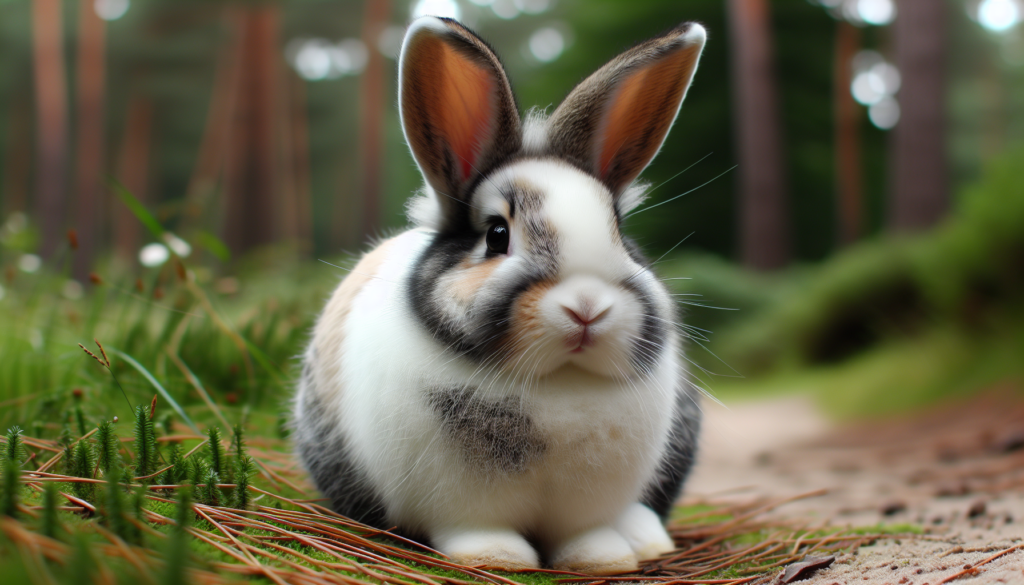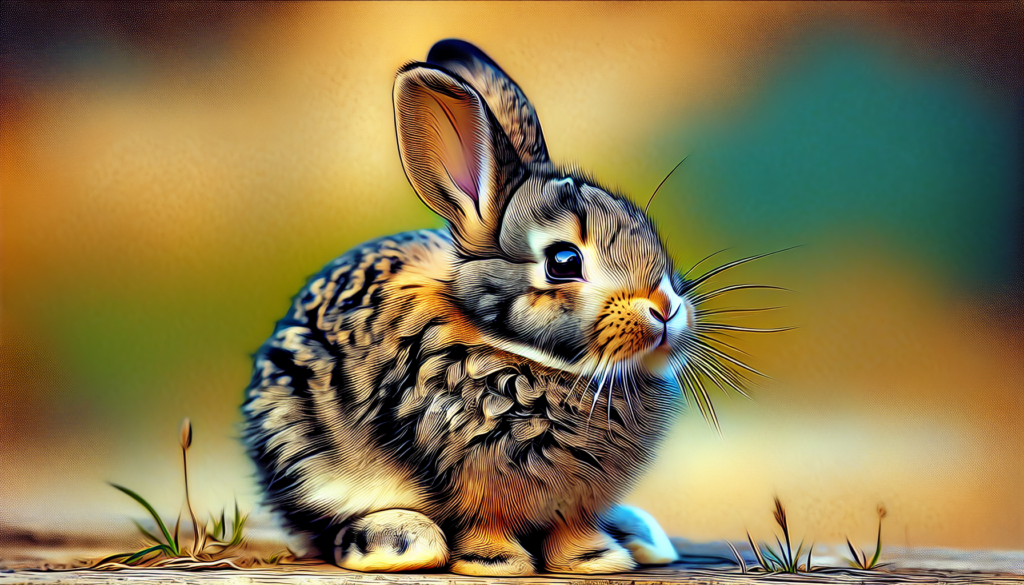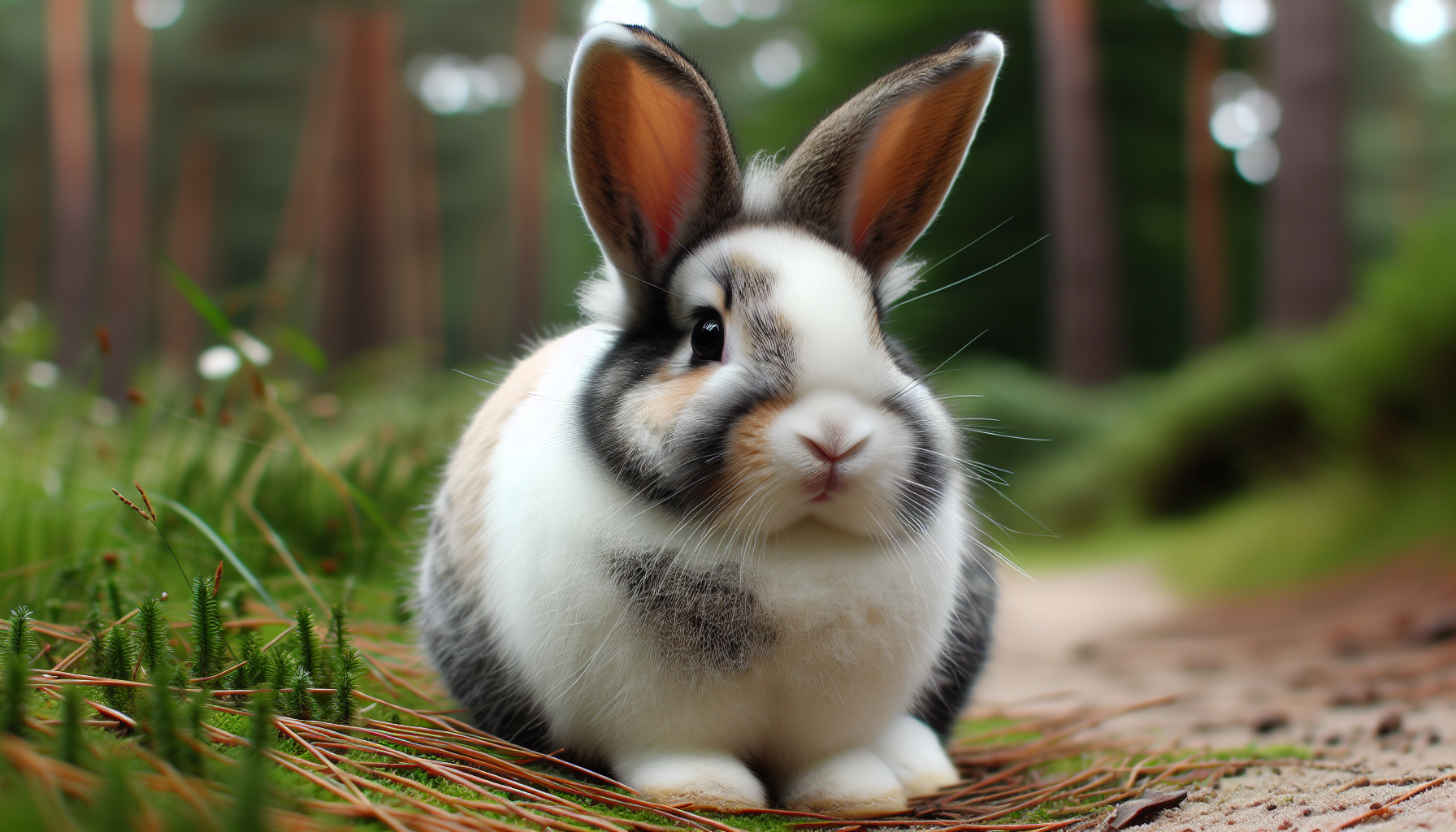Imagine having a furry friend that fits perfectly in the palm of your hand. Well, let me tell you about Dutch rabbits – these pint-sized bundles of cuteness are known for their small stature. But just how big can they get? In this article, we will explore the maximum size of a Dutch rabbit, giving you all the details you need to know about these adorable little creatures. So, get ready to embark on a delightful journey into the world of the Dutch rabbit’s size!

Overview of Dutch rabbits
What are Dutch rabbits?
Dutch rabbits are a popular breed of domesticated rabbits known for their distinctive markings and compact body. They are characterized by their short, rounded bodies, short erect ears, and striking coloration, with a white blaze down the front of their face and color bands around their eyes. Dutch rabbits have a friendly and playful nature, making them great pets for individuals and families alike.
Origin of Dutch rabbits
Originating in the Netherlands during the 19th century, Dutch rabbits were first bred for their attractive markings and gentle temperament. They were originally known as “Hollander” rabbits but later came to be recognized as Dutch rabbits due to their country of origin. Dutch rabbits gained popularity for their stunning appearance and sociable nature, eventually becoming one of the most well-known and beloved rabbit breeds worldwide.
Distinctive features of Dutch rabbits
One of the most recognizable features of Dutch rabbits is their striking color pattern. They have a solid-colored coat on their back and sides, with the rest of their body being predominantly white. This unique coloring creates a visually appealing contrast, making Dutch rabbits stand out among other rabbit breeds. Additionally, Dutch rabbits have a compact and muscular build, with the average body length ranging from 8 to 12 inches and weighing between 3 to 5 pounds. Their short erect ears and bright expressive eyes add to their adorable appearance.
Determining breed standards
Breed standards for Dutch rabbits
The Dutch rabbit breed has specific standards that breeders and judges use to evaluate and classify individual rabbits. These standards outline the desired physical characteristics, such as size, color, and markings, that define a purebred Dutch rabbit. The American Rabbit Breeders Association (ARBA) and other similar organizations have established breed standards for Dutch rabbits, ensuring uniformity and quality within the breed.
Importance of breed standards
Breed standards are essential because they help maintain the integrity and quality of a particular rabbit breed. By adhering to these standards, breeders can ensure that the offspring of Dutch rabbits possess the desired traits and appearance. Moreover, breed standards enable judges to evaluate and compare rabbits in shows, ensuring fair competition and recognizing rabbits that best represent the breed’s standards. Breed standards contribute to the preservation and improvement of Dutch rabbits as a distinct and recognizable breed.
Average size of Dutch rabbits
Factors influencing the size of Dutch rabbits
Several factors influence the size of Dutch rabbits. Genetics and hereditary factors play a significant role in determining their overall size and body structure. The diet and nutrition provided also affect their growth and development. Furthermore, exercise and physical activity play a vital role in maintaining the ideal size and weight of Dutch rabbits.
General size range of Dutch rabbits
Dutch rabbits generally fall within a specific size range. While individual rabbits may vary, the average body length of Dutch rabbits ranges from 8 to 12 inches. In terms of weight, the typical range for adult Dutch rabbits is between 3 to 5 pounds. These measurements give Dutch rabbits their signature compact and sturdy appearance, making them a manageable size for both indoor and outdoor living.
Variations in size among Dutch rabbits
Despite the standardized general size range, there can be slight variations in size among Dutch rabbits. Within the breed, there may be individuals that lean towards the smaller end of the range, being more petite and lighter in weight. On the other hand, some Dutch rabbits may grow larger and have a more robust build, reaching the upper end of the size range. These variations are influenced by genetic factors, environmental conditions, and individual growth rates.
Ideal weight for Dutch rabbits
Weight standards for Dutch rabbits
The ideal weight for Dutch rabbits is dependent on their age and sex. Typically, adult bucks (males) should weigh between 3.5 and 5 pounds, while adult does (females) should weigh between 4 and 5.5 pounds. It is crucial to monitor a Dutch rabbit’s weight to ensure they remain within these recommended ranges for optimal health and well-being.
Different weight divisions for Dutch rabbits
To further classify Dutch rabbits based on their weight, breed standards divide them into different weight divisions. These divisions provide a more precise categorization of Dutch rabbits and aid in fair competition during rabbit shows. The different weight divisions include “Junior Bucks” and “Junior Does,” which are rabbits under six months old, “Intermediate Bucks” and “Intermediate Does,” which are rabbits between six and eight months old, and “Senior Bucks” and “Senior Does,” which are rabbits over eight months old.

Influential factors on size
Genetics and hereditary factors
Genetics and hereditary factors play a crucial role in determining the size of Dutch rabbits. The traits inherited from their parents’ genes influence their growth potential and overall body size. Responsible breeders carefully select breeding pairs to ensure desirable size traits are passed down to offspring, promoting the consistent size of Dutch rabbits within the breed.
Nutrition and diet
Proper nutrition and a balanced diet are essential for the healthy growth and development of Dutch rabbits. Providing a diet rich in fresh hay, high-quality pellets, and a variety of fresh vegetables ensures they receive the necessary nutrients for their size. Overfeeding or underfeeding can impact a Dutch rabbit’s growth rate and overall size, so it is vital to consult with a veterinarian or specialist to determine the appropriate nutritional requirements for your Dutch rabbit.
Exercise and physical activity
Regular exercise and physical activity contribute to maintaining the ideal size and weight of Dutch rabbits. Engaging in activities such as hopping, running, and exploring not only promotes physical fitness but also stimulates mental well-being. Providing ample space for your Dutch rabbit to move around and engage in playtime is crucial in supporting their overall health and maintaining their size within the breed’s standards.
Comparison with other rabbit breeds
Lop rabbits
Lop rabbits, known for their unique drooping ears, differ significantly in size compared to Dutch rabbits. Lop rabbits tend to be larger, with some individuals reaching weights of over 10 pounds and having a longer body length. This contrast in size is due to their distinct genetic makeup and breed characteristics. While Dutch rabbits are compact and muscular, lop rabbits have a more elongated and slender build.
Flemish Giant rabbits
Flemish Giant rabbits are one of the largest domestic rabbit breeds, often weighing between 13 and 15 pounds and measuring up to 2.5 feet in length. Their colossal size sets them apart from Dutch rabbits as they are significantly larger and more robust. Flemish Giant rabbits have a more elongated body, long ears, and a gentle temperament, making them quite different in appearance and size when compared to Dutch rabbits.
Netherland Dwarf rabbits
In contrast to the size of Dutch rabbits, Netherland Dwarf rabbits are one of the smallest rabbit breeds. They weigh between 1.5 and 2.5 pounds and have a compact and rounded body similar to Dutch rabbits. While both Dutch rabbits and Netherland Dwarf rabbits share certain physical characteristics, the significant difference in size results in distinct breed standards and care requirements.
Health implications of size
Health considerations related to larger Dutch rabbits
Larger Dutch rabbits may be more prone to certain health issues compared to their smaller counterparts. They may have a higher risk of developing obesity, which can lead to various complications such as joint problems and heart conditions. Additionally, larger Dutch rabbits can be more susceptible to heat stress during hot weather due to their increased body mass. Regular veterinary check-ups and a balanced diet are crucial to ensuring the health and well-being of larger Dutch rabbits.
Health considerations related to smaller Dutch rabbits
Smaller Dutch rabbits may be more delicate and fragile, requiring extra care to prevent accidental injuries. They may have a higher metabolism and may need more frequent feeding to maintain weight and prevent malnutrition. Monitoring their food intake and providing a safe and comfortable environment is essential for the overall health and longevity of smaller Dutch rabbits.
Breeding techniques for size control
Selective breeding practices
Selective breeding plays a significant role in controlling the size of Dutch rabbits. Breeders carefully choose breeding pairs with desirable size traits to ensure the offspring exhibit the desired characteristics. Through generations of selective breeding, breeders can gradually establish and maintain the size standards within the Dutch rabbit breed.
Importance of responsible breeding
Responsible breeding practices are crucial in maintaining and improving the overall health and size of Dutch rabbits. Breeders should prioritize the well-being of the rabbits and avoid breeding individuals that may have underlying health issues or are significantly smaller or larger than the breed standard. Responsible breeders aim to produce healthy, well-rounded Dutch rabbits that meet the breed standards while minimizing the risk of genetic health problems.
Care and maintenance
Providing adequate housing
Providing suitable housing is essential for the well-being of Dutch rabbits. A spacious and secure enclosure that allows them to hop and stretch comfortably is necessary. The hutch or cage should be well-ventilated, with a separate area for resting and hiding. Regular cleaning of the living space is important to maintain cleanliness and prevent the buildup of waste, ensuring the rabbit’s health and hygiene.
Maintaining a balanced diet
Maintaining a balanced diet is crucial in supporting the growth and size of Dutch rabbits. A high-fiber diet consisting of good-quality hay, fresh vegetables, and limited amounts of rabbit pellets ensures they receive the necessary nutrients. Avoiding excessive treats and offering clean, fresh water at all times also contributes to their overall well-being and size management.
Physical and mental stimulation
Dutch rabbits require both physical and mental stimulation to thrive. Providing opportunities for exercise through supervised playtime and access to bunny-safe toys helps them burn off energy and stay physically active. Additionally, mental stimulation can be achieved through puzzle toys, tunnels, and interactive games, preventing boredom and promoting a happy and well-adjusted Dutch rabbit.
Conclusion
Summary of Dutch rabbit size
Dutch rabbits are known for their distinctive markings, friendly nature, and compact size. On average, they measure between 8 to 12 inches in length and weigh between 3 to 5 pounds, exhibiting a well-proportioned and muscular build. While variations in size exist within the breed, responsible breeding practices and adherence to breed standards help maintain the desired size traits in Dutch rabbits.
Individual variations within the breed
Despite the average size range, Dutch rabbits may display slight variations in size due to genetic, environmental, and individual factors. It is essential to provide appropriate nutrition, regular exercise, and general care to support the healthy growth and development of Dutch rabbits. Consulting with a veterinarian or experienced breeder can provide further guidance in maintaining optimal size and ensuring the well-being of Dutch rabbits as cherished pets.
